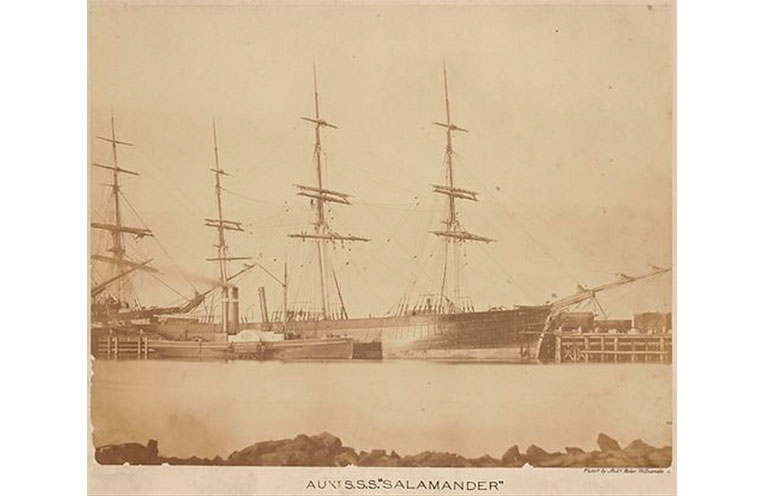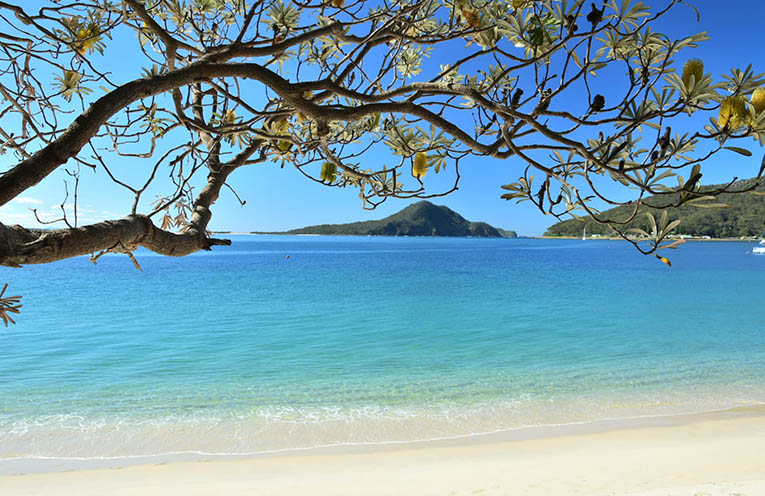STUDYING local history, one of the most fascinating events was the sailing of the ship “Salamander” through the heads into the calm waters of Port Stephens late in 1791, becoming the first ship to enter the Port.
The Salamander was a whaler commissioned as a convict transport for the British government.
How I would have loved to have been on that ship, to witness the magnificent waterway as it had been unaltered for thousands and thousands of years.
I can imagine the smoke of the Worimi campfires smudging the shoreline and the amazement of the Aboriginal people to witness this strange arrival.
What would their thoughts and reactions have been?
The Salamander had been one of the 11 ships that made up The Third Fleet, which departed England carrying more than 2000 convicts, arriving in Port Jackson after 194 male and four female convicts had died on the voyage.
The ships reached Port Jackson over a period from July 1791 to October 1791.
The Salamander, which is of most interest to us in Port Stephens, left England with 160 convicts on board, arriving in Port Jackson on 21 August 1791 with 155 on board, 147 days out of Plymouth.
Retracing the passage of the Salamander I uncovered a fascinating story.
Built on the Thames in 1776, the Salamander, following a period of inclement weather finally departed Plymouth along with ships “William and Mary” and “Atlantic”, known as the Plymouth Division.
The voyage to Port Jackson has been recounted by J.R. Ryan in his book “The Third Fleet Convicts”.
The ships of the Plymouth Division stayed together as they sailed south to the equator, when the Salamander departed from the fleet on a dark and squally night.
The three ships regrouped in Rio de Janeiro and sailed together from the port only to again become separated by a heavy gale forcing all three ships to sail directly to Port Jackson without a stopover in Cape Town.
The first of the three ships to arrive in Port Jackson on 20 August 1791 was the “Atlantic”; the Salamander was the second to arrive, a day later.
On 4 September the Salamander departed Port Jackson for Norfolk Island where 200 convicts and stores were unloaded twelve days later.
Carrying two nine-foot planks of Norfolk Island timber to repair the main mast of the “Supply”, the Salamander returned to Port Jackson.
On 2 November the Salamander again sailed from Port Jackson to undertake the first whaling venture on the NSW coast.
It was on this venture that the ship sailed into Port Stephens, being the first to do so.
On its last recorded voyage Salamander departed Sydney on 15 November 1794 for Norfolk Island and then on to India. Nothing more was located regarding the voyages of the Salamander.
This article is a summary of research carried out by M.A. Bartlett for her book “The Port Stephens Story” and by information gathered by Members of the Tomaree Family History Group 2006 for their book “The Crimes and Lives of the Convicts arriving in Sydney on the Salamander 1791”.
By John ‘Stinker’ CLARKE
You can help your local paper.
Make a small once-off, or (if you can) a regular donation.
We are an independent family owned business and our newspapers are free to collect and our news stories are free online.
Help support us into the future.




